






Over the past few weeks, Louis Vuitton’s flagship stores unveiled the newest collaboration with Yayoi Kusama. The project, marked by its giant size and global presence, celebrates the creativity of one of the most revered artists of modern times.
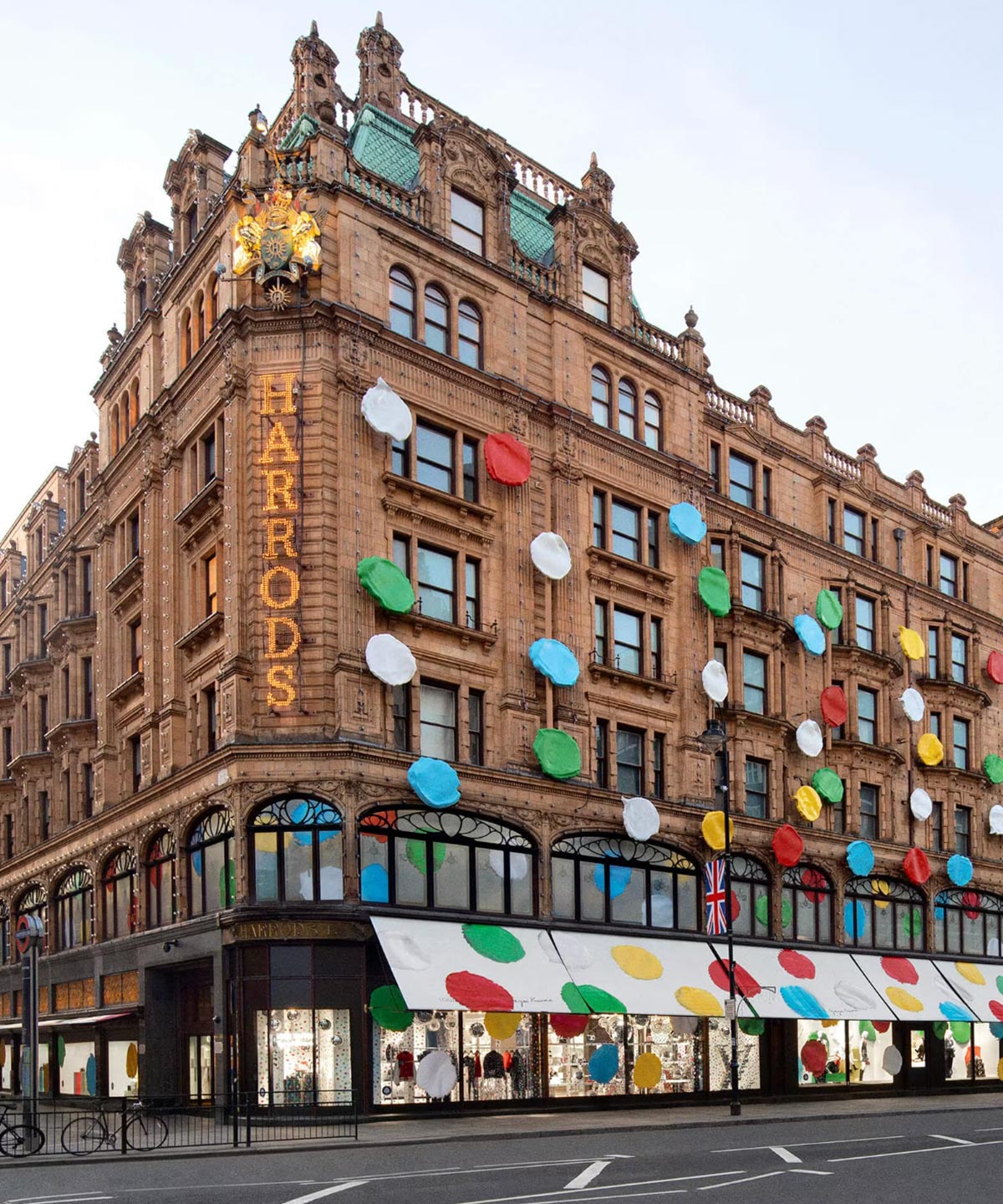
The immersive world of Louis Vuitton and Yayoi Kusama at London's Harrods until 12th February. With a dedicated pop-up, visitors can enter Kusama’s colorful painted dot world through a series of playful installations on the store’s façade, interior and window displays
However, the Japanese creative is not only recognised for creating synergies between art and fashion. There is much more behind the biggest-selling female artist in the world. Find out in five points.
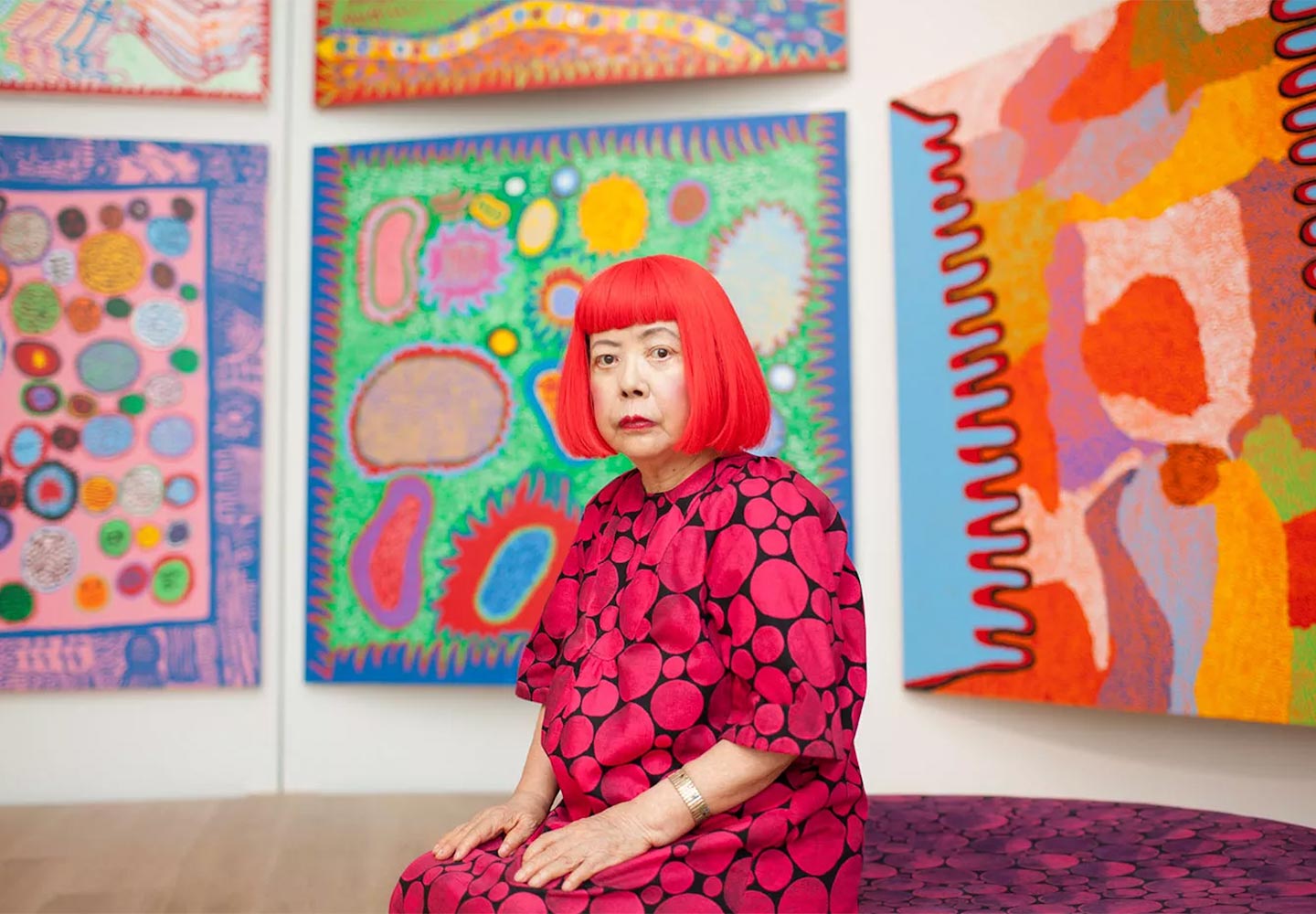
Yayoi Kusama in 2014
-
Art as Therapy
Few artists in the world can attest to the role of art in mental health as well as Japanese revolutionary Yayoi Kusama. In a 2016 interview, she told Dazed that art provided her with an “outlet for her dark days.” Indeed, she has used art throughout her life to deal with childhood trauma, hallucinations, and oppression as a marginalized artist. Yet, in turn, she has created one of the world’s most psychological works of art.
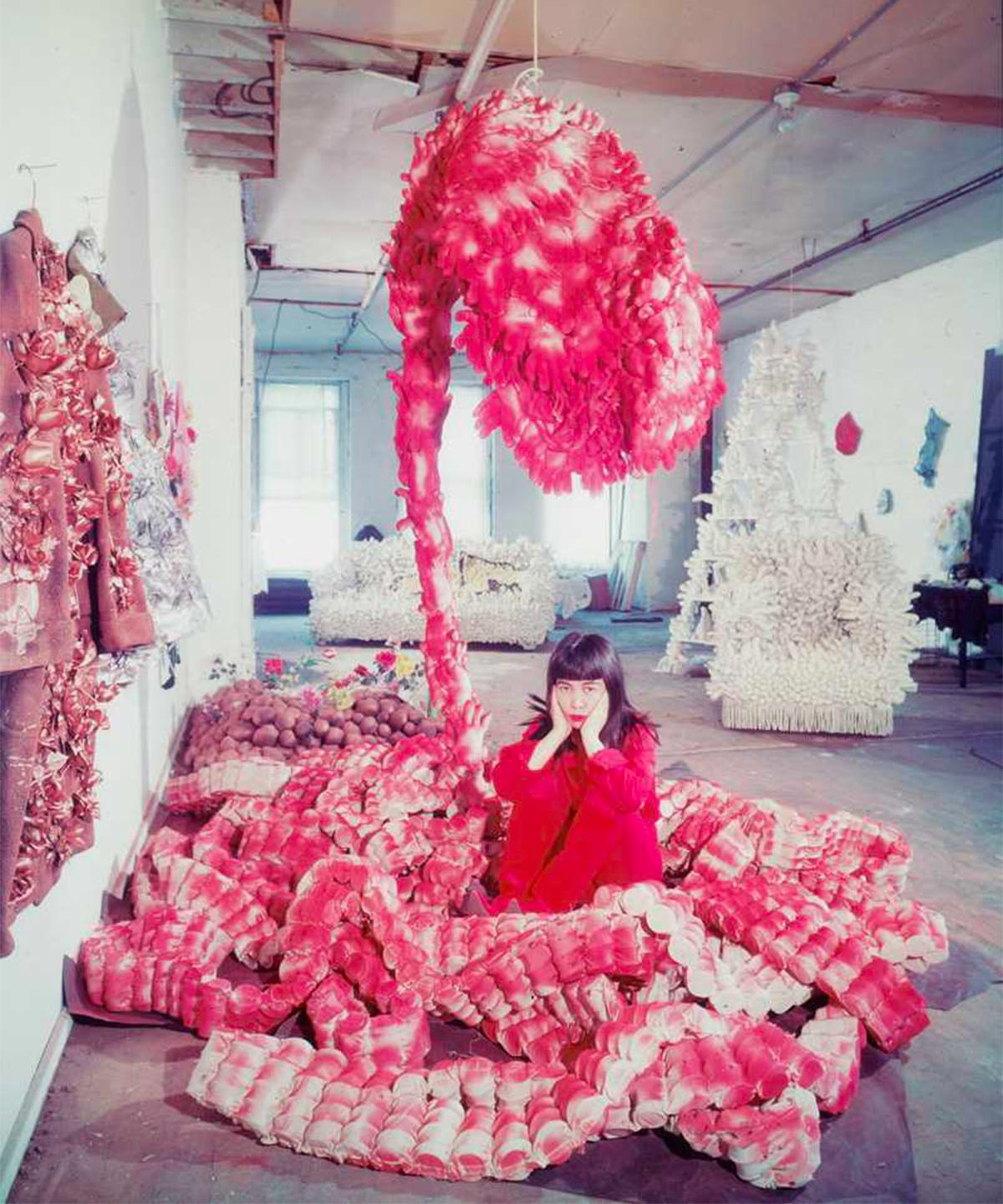
1965 Lying on the base of My Flower Bed (1962) Photo: Peter Moore © Northwestern University © YAYOI KUSAMA
Instead of letting her mental illness consume her completely, she uses it as a strength. Her courage belies the art world’s desire for a romantic, tortured genius and proves that one can live and express one’s mental health. Her ability to use art as a form of therapy also underlines the power of freedom and shows that mental disorders should not be hidden but shared.
-
Infinity Room
According to the artist, the works are a means to explore perceptions of time and infinity, which are then reflected as an escape route to master her visions. Through her Infinity Rooms, Kusama creates new dimensions of the space.

Yayoi Kusama, Infinity Mirrored Room ® Filled with the Brilliance of Life, 2011 © YAYOI KUSAMA, Courtesy of Ota Fine Arts, Victoria Miro
This series of works, which began in 1963, depicts disorienting environments that allow the viewer to peer into and interpret them in singular ways. The artist aims to take the viewer on a journey through his thoughts. In this way, the observer experiences first-hand and with their own emotions what Kusama lives daily. Filled With the Brilliance of Life - one of the first Infinity Mirrored Rooms - is where visitors must pass through a corridor of mirrored tiles. The rest of the room is also reflected, and the floor is covered with a shallow pool of water. Hundreds of small round LED lights in different colours hang from the ceiling and switch on and off in time. The landscape is reflected in the mirrors, giving the viewer the experience of being in a seemingly infinite space.
-
Connecting the Dots
Obsessive repetition is a typical feature of Kusama’s art, which can be seen since the early 1960s. Dots have always inspired her, as they embody infinity.
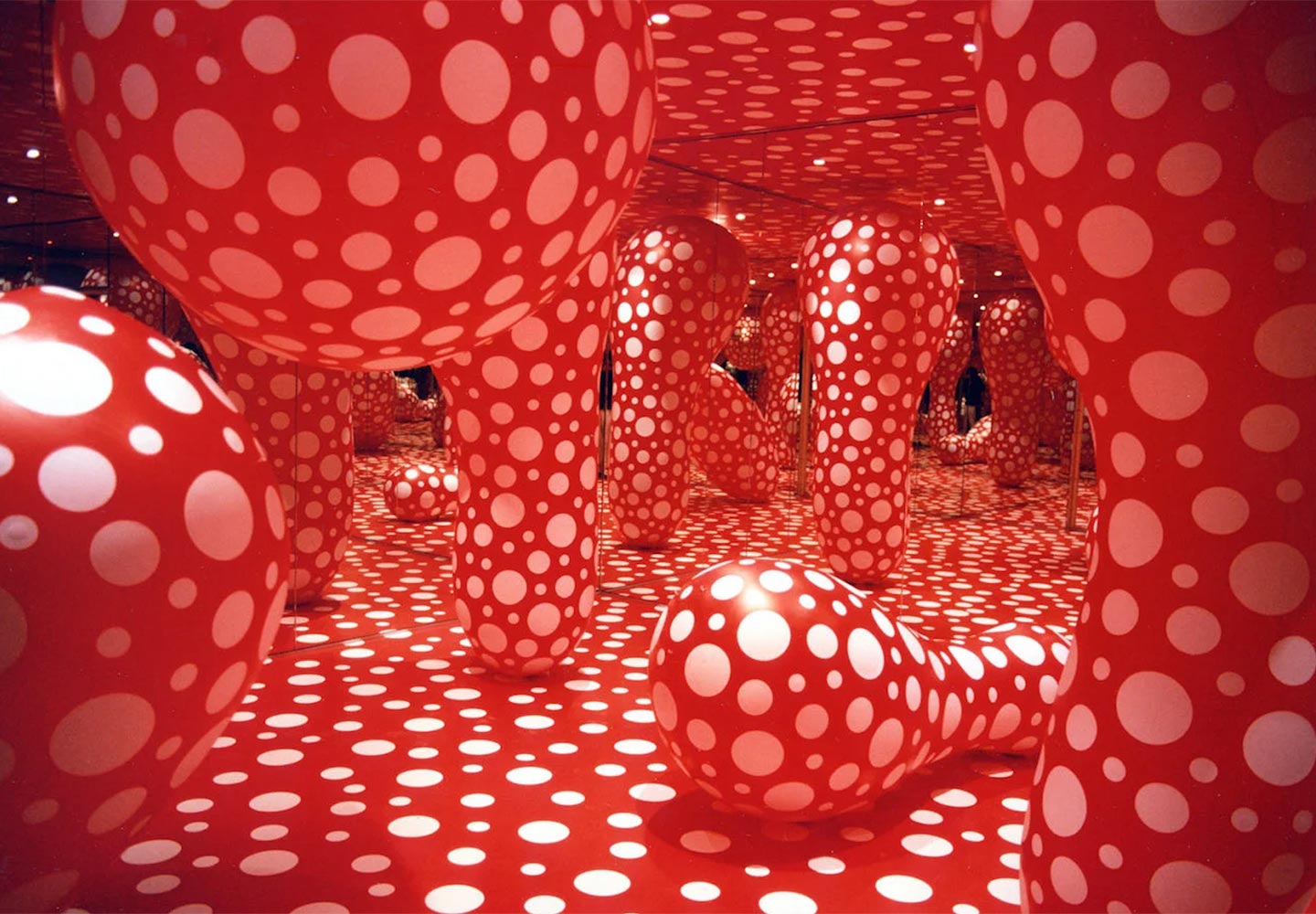
Yayoi Kusama, Dots Obsession, Infinity Mirrored Room, 1998. Installation. Les Abattoirs, Toulouse, France
In her autobiography Infinity Net (2013), she wrote: “My desire was to predict and measure the infinity of the boundless universe from my own position with dots - a collection of particles that form the negative spaces in the net. How deep was the mystery? Were there infinite spaces beyond our universe? In exploring these questions, I wanted to examine the single point that was my own life.”
-
Pumpkins Imagery
Pumpkins represent positive imagery for Kusama as they remind her of a bright part of her troubled childhood in Matsumoto, Japan.

Yayoi Kusama's All the Eternal Love I Have for the Pumpkins, 2016
When she was young, Kusama spent hours drawing pumpkins as they represent stability, comfort, and humility to her. She says she prefers pumpkins because they are attractive in colour and form and delicate to the touch.

Yayoi Kusama in front of one of her works
-
Kusama and Fashion, Kusama and Louis Vuitton
And then there’s Louis Vuitton, a first collaboration that began more than a decade ago, in 2010, when then-creative director Marc Jacobs commissioned them to design a unique collection to open an exhibition at New York’s Whitney Museum of American Art.
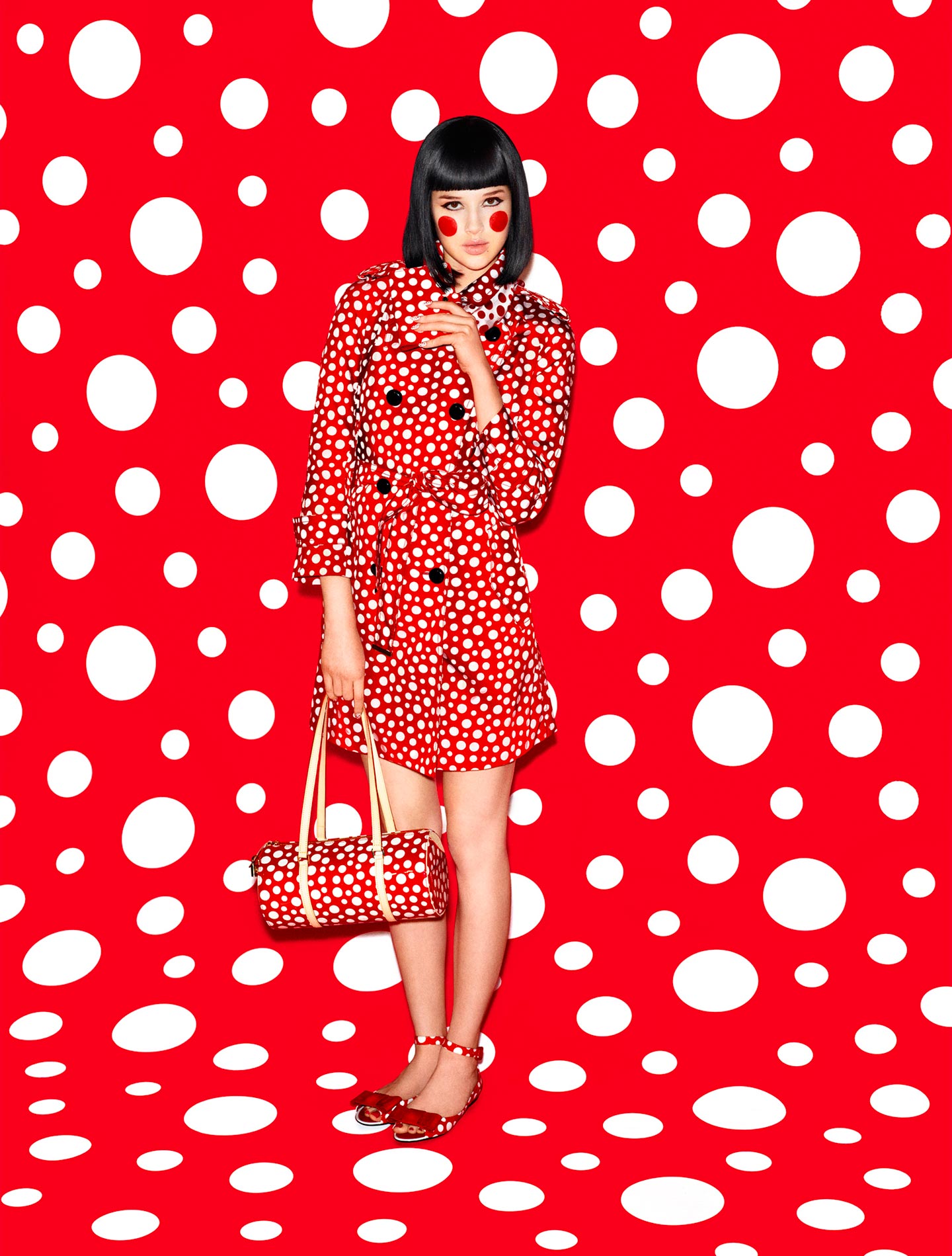
Fans of Louis Vuitton will remember the first Yayoi Kusama partnership from 2012 under the creative direction of Marc Jacobs
Today, the collaboration is renewed in international activations that paint the world with iconic polka dots. From Milan (San Babila) to New York, where a robot representing the artist paints on its own, passing by Paris, where a giant sculpture by Yayoi Kusama towers from the top of the flagship shop on the Champs-Élysées and Tokyo with monumental 3D sculptures.
Sofia Sarandrea
Fashion Business, Digital Communication and New Media, 3rd year, Milan



